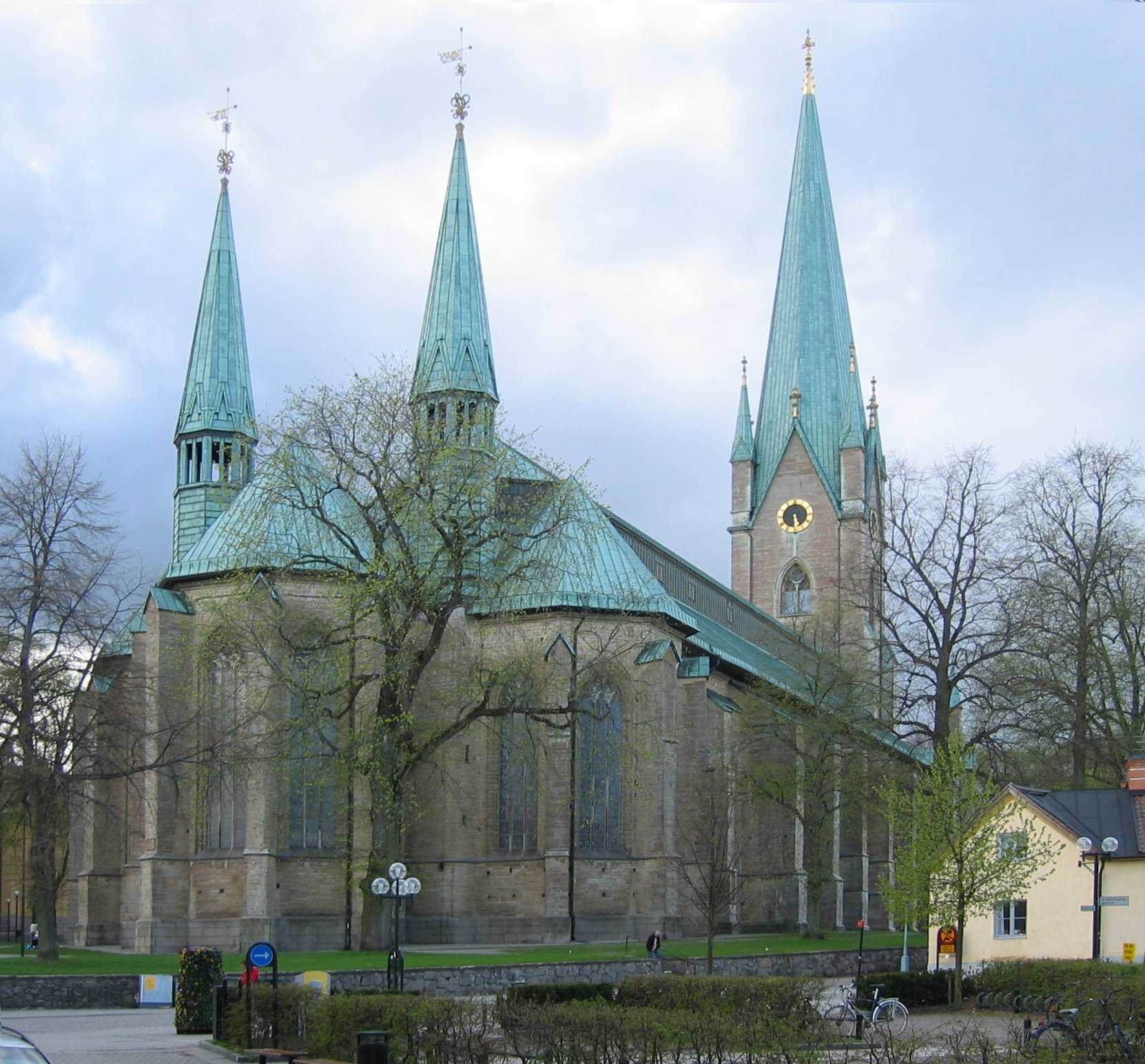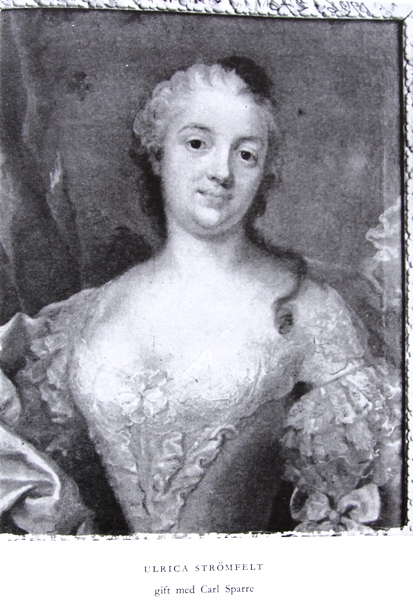|
Julie Eckerman
Catharina Juliana "Julie" Eckerman (1765–1800), was a Swedish courtesan and spy. She is most known as the kept lover of riksråd count Carl Sparre, a relationship which attracted attention and was used by the opposition of Sparre during his political career. Life She was born to the writer Catharina Ahlgren and Bengt Edvard Eckerman, cavalry master of the Royal Scanian Husars, and the sister of Charlotte Eckerman. Her parents separated in 1768 because of her father's adultery and after he had refused to acknowledge her youngest brother. At least she and her sister was brought up with their mother. They were given a fine education and was tutored in the French language. However, the home was poor, and Eckerman later describe that her childhood, though cultivated, was miserable as far as the economy was concerned. Both Julie and her sister Charlotte were active as courtesans or high class prostitutes from an early age. Among her clients were a certain Müller, secretary at the Ger ... [...More Info...] [...Related Items...] OR: [Wikipedia] [Google] [Baidu] |
Courtesan
Courtesan, in modern usage, is a euphemism for a "kept" mistress (lover), mistress or prostitute, particularly one with wealthy, powerful, or influential clients. The term historically referred to a courtier, a person who attended the Royal court, court of a monarch or other powerful person. History In European feudalism, feudal society, the court was the centre of government as well as the residence of the monarch, and social and political life were often completely mixed together. Prior to the Renaissance, courtesans served to convey information to visiting dignitaries, when servants could not be trusted. In Renaissance Europe, courtiers played an extremely important role in upper-class society. As it was customary during this time for royal couples to lead separate lives—commonly marrying simply to preserve bloodlines and to secure political alliances—men and women would often seek gratification and companionship from people living at court. In fact, the verb 'to court' ... [...More Info...] [...Related Items...] OR: [Wikipedia] [Google] [Baidu] |
Linköping
Linköping () is a city in southern Sweden, with around 105,000 inhabitants as of 2021. It is the seat of Linköping Municipality and the capital of Östergötland County. Linköping is also the episcopal see of the Diocese of Linköping (Church of Sweden) and is well known for its cathedral. Linköping is the center of an old cultural region and celebrated its 700th anniversary in 1987. Dominating the city's skyline from afar is the steeple of the cathedral, Domkyrka. Nowadays, Linköping is known for its university and its high-technology industry. Linköping wants to create a sustainable development of the city and therefore plans to become a carbon-neutral community by 2025. Located on the Östergötland Plain, Linköping is closely linked to Norrköping, roughly to the east, near the sea. History The city is possibly named after the '' Lionga ting'' assembly which according to Medieval Scandinavian laws was the most important thing in Östergötland. Exact location ... [...More Info...] [...Related Items...] OR: [Wikipedia] [Google] [Baidu] |
1765 Births
Events January–March * January 23 – Prince Joseph of Austria marries Princess Maria Josepha of Bavaria in Vienna. * January 29 – One week before his death, Mir Jafar, who had been enthroned as the Nawab of Bengal and ruler of the Bengali people with the support and protection of the British East India Company, abdicates in favor of his 18-year-old son, Najmuddin Ali Khan. * February 8 – **Frederick the Great, the King of Prussia, issues a decree abolishing the historic punishments against unmarried women in Germany for "sex crimes", particularly the ''Hurenstrafen'' (literally "whore shaming") practices of public humiliation. **Isaac Barré, a member of the British House of Commons for Wycombe and a veteran of the French and Indian War in the British American colonies, coins the term "Sons of Liberty" in a rebuttal to Charles Townshend's derisive description of the American colonists during the introduction of the proposed Stamp Act. MP Barré n ... [...More Info...] [...Related Items...] OR: [Wikipedia] [Google] [Baidu] |
18th-century Spies
The 18th century lasted from January 1, 1701 ( MDCCI) to December 31, 1800 ( MDCCC). During the 18th century, elements of Enlightenment thinking culminated in the American, French, and Haitian Revolutions. During the century, slave trading and human trafficking expanded across the shores of the Atlantic, while declining in Russia, China, and Korea. Revolutions began to challenge the legitimacy of monarchical and aristocratic power structures, including the structures and beliefs that supported slavery. The Industrial Revolution began during mid-century, leading to radical changes in human society and the environment. Western historians have occasionally defined the 18th century otherwise for the purposes of their work. For example, the "short" 18th century may be defined as 1715–1789, denoting the period of time between the death of Louis XIV of France and the start of the French Revolution, with an emphasis on directly interconnected events. To historians who expand the ... [...More Info...] [...Related Items...] OR: [Wikipedia] [Google] [Baidu] |
18th-century Swedish People
The 18th century lasted from January 1, 1701 ( MDCCI) to December 31, 1800 ( MDCCC). During the 18th century, elements of Enlightenment thinking culminated in the American, French, and Haitian Revolutions. During the century, slave trading and human trafficking expanded across the shores of the Atlantic, while declining in Russia, China, and Korea. Revolutions began to challenge the legitimacy of monarchical and aristocratic power structures, including the structures and beliefs that supported slavery. The Industrial Revolution began during mid-century, leading to radical changes in human society and the environment. Western historians have occasionally defined the 18th century otherwise for the purposes of their work. For example, the "short" 18th century may be defined as 1715–1789, denoting the period of time between the death of Louis XIV of France and the start of the French Revolution, with an emphasis on directly interconnected events. To historians who expand ... [...More Info...] [...Related Items...] OR: [Wikipedia] [Google] [Baidu] |
Swedish Courtesans
Swedish or ' may refer to: Anything from or related to Sweden, a country in Northern Europe. Or, specifically: * Swedish language, a North Germanic language spoken primarily in Sweden and Finland ** Swedish alphabet, the official alphabet used by the Swedish language * Swedish people or Swedes, persons with a Swedish ancestral or ethnic identity ** A national or citizen of Sweden, see demographics of Sweden ** Culture of Sweden * Swedish cuisine See also * * Swedish Church (other) * Swedish Institute (other) * Swedish invasion (other) * Swedish Open (other) Swedish Open is a tennis tournament. Swedish Open may also refer to: *Swedish Open (badminton) * Swedish Open (table tennis) *Swedish Open (squash) *Swedish Open (darts) The Swedish Open is a darts tournament established in 1969, held in Malm� ... {{disambig Language and nationality disambiguation pages ... [...More Info...] [...Related Items...] OR: [Wikipedia] [Google] [Baidu] |
Swedish Spies
Swedish or ' may refer to: Anything from or related to Sweden, a country in Northern Europe. Or, specifically: * Swedish language, a North Germanic language spoken primarily in Sweden and Finland ** Swedish alphabet, the official alphabet used by the Swedish language * Swedish people or Swedes, persons with a Swedish ancestral or ethnic identity ** A national or citizen of Sweden, see demographics of Sweden ** Culture of Sweden * Swedish cuisine See also * * Swedish Church (other) * Swedish Institute (other) * Swedish invasion (other) * Swedish Open (other) Swedish Open is a tennis tournament. Swedish Open may also refer to: *Swedish Open (badminton) * Swedish Open (table tennis) *Swedish Open (squash) *Swedish Open (darts) The Swedish Open is a darts tournament established in 1969, held in Malm� ... {{disambig Language and nationality disambiguation pages ... [...More Info...] [...Related Items...] OR: [Wikipedia] [Google] [Baidu] |
Lustschloss
In Renaissance and Early Modern German architecture, a ''Lustschloss'' (french: maison de plaisance, both equating in English to "pleasure castle/house") is a small country house or palace which served the private pleasure of its owner, usually the ruler of the area it is located in, and was seasonally inhabited as a respite from court ceremonies and state duties. In France, the Château de Madrid in the Bois de Boulogne, easily reached from Paris, arguably set an example, and Louis XIV similarly holidayed annually from the Palace of Versailles to his nearby Château de Marly, and more frequently used his Grand Trianon, to which the Petit Trianon was added in the following century. There is no common term for such houses in English, and the phenomenon developed especially in the smaller states of Germany, where the ruler was firmly based in one or two main palaces, as opposed to the much larger number available to the monarchies of England, France and Spain (after Henry VIII's ... [...More Info...] [...Related Items...] OR: [Wikipedia] [Google] [Baidu] |
Riksråd
Riksrådet (in Norwegian and Swedish), Rigsrådet (in Danish) or (English: the Council of the Realm and the Council of the State – sometimes translated as the "Privy Council") is the name of the councils of the Scandinavian countries that ruled the countries together with the kings from late Middle Ages to the 17th century. Norway had a Council of the Realm () that was de facto abolished by the Danish-Norwegian king in 1536–1537. In Sweden the parallel Council gradually came under the influence of the king during the 17th century. Rigsrådet in Denmark The members of the Council of Denmark seem to have developed from being councillors of the king to being representatives of the magnates and noblemen. From the 1320s it clearly appears as a force, and from the 1440s it was the permanent opponent of royal power, replacing the Danehof. The Council consisted of noblemen who were appointed either by the king or their peers on the council. Until the 1536 Reformation, bishops were a ... [...More Info...] [...Related Items...] OR: [Wikipedia] [Google] [Baidu] |
Ulrika Strömfelt
Ulrika Eleonora Strömfelt (1724–5 April 1780), was a politically active Swedish noble and courtier. She is known for her part in the attempted Coup d'état of queen Louisa Ulrika in 1756. Life Ulrika Strömfelt was the daughter of riksråd count Johan Carl Strömfelt and the ''överhovmästarinna'' and royal governess Hedvig Elisabet Wrangel. In 1739, she became '' hovfröken'' (maid of honor) to Ulrika Eleonora, Queen of Sweden. In 1744, she was made maid of honor to the new crown princess, Louisa Ulrika of Prussia. She and her sister Agneta Strömfelt belonged to the first circle of courtiers appointed to Louisa Ulrika after her arrival in Sweden together with Cathérine Charlotte De la Gardie, Henrika Juliana von Liewen and Charlotta Sparre. In 1748, she was promoted to the position of '' kammarfröken'' (Chief Maid of honor) after Henrika Juliana von Liewen departure from court. She was apparently well liked by Louisa Ulrika, and was often given the task to read ... [...More Info...] [...Related Items...] OR: [Wikipedia] [Google] [Baidu] |
Andrey Razumovsky
Count (later Prince) Andrey Kirillovich Razumovskyrussian: Андре́й Кири́ллович Разумо́вский, , german: Andreas von Rasumofsky (2 November 1752 – 23 September 1836) was a Russian Imperial diplomat who spent many years of his life in Vienna. His name is transliterated differently in different English sources, including spellings Razumovsky, Rasumofsky, and Rasoumoffsky. This last spelling was used by the British Government for its official translation from the French of the Paris peace treaty of 1815 and the Final Act of the Congress of Vienna. Life Razumovsky was the son of Kirill Razumovsky, the last Hetman of Zaporizhian Host and of , a cousin of Tsarina Elizabeth of Russia. He was also a nephew of the Tsarina's lover, Aleksey Grigorievich Razumovsky, called the "Night Emperor" of Russia. The elder Rasumovsky's late Baroque palace on the Nevsky Prospekt is a minor landmark in Saint Petersburg. In 1792 Andrey Kirillovitch was appointed the T ... [...More Info...] [...Related Items...] OR: [Wikipedia] [Google] [Baidu] |





